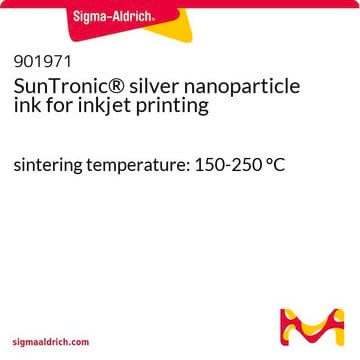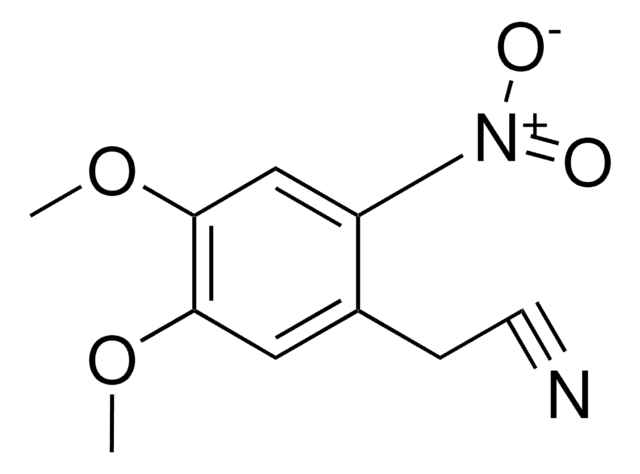There is no specific information available on the exact drying time after printing ink. Overnight drying is generally recommended, but it is important to consider the substrate and environmental conditions, as these can influence the actual drying time. If precise drying time is required, conducting a test on the specific substrate used may provide better guidance.
791873
Conductive silver printing ink, resistivity 5-6 Ω cm
Sinónimos:
Greatcell Solar®, Dyesol(R) DYAG50 conductive silver ink, Screen printable silver paste
About This Item
Productos recomendados
descripción
volume resistivity 5 - 6 Ω cm
Nivel de calidad
Ensayo
75-85% solids basis
Formulario
paste (white)
viscosidad
13,000-17,000 mPa.s (at shear rate of 10 sec-1 at 25°C)
Categorías relacionadas
Descripción general
Aplicación
This Conductive Silver Printing Ink is a specially formulated ink which provides exceptionally high conductivity at low cure temperatures. This highly conductive ink provides extremely low resistance printed conducting tracks, essential for the photovoltaic applications. By providing the lowest track resistances of printed current collectors, this material is a key enabler in plastic electronics, such as, DSSC, OPV, and CdTe solar cells.
Información legal
GreatcellSolar is a registered trademark of Greatcell Solar Materials Pty Ltd.
Palabra de señalización
Warning
Frases de peligro
Consejos de prudencia
Clasificaciones de peligro
Aquatic Acute 1 - Aquatic Chronic 1 - Eye Irrit. 2 - Skin Irrit. 2
Código de clase de almacenamiento
10 - Combustible liquids
Clase de riesgo para el agua (WGK)
WGK 3
Punto de inflamabilidad (°F)
174.2 °F
Punto de inflamabilidad (°C)
79 °C
Elija entre una de las versiones más recientes:
¿Ya tiene este producto?
Encuentre la documentación para los productos que ha comprado recientemente en la Biblioteca de documentos.
Artículos
The ability to pattern conductive electrodes is technologically relevant for several applications, including photovolatics, displays, sensors, and biomedical devices.
Small molecular weight organic semiconductors are promising for flexible transistor applications in next-gen soft electronics.
Dye-sensitized solar cells (DSCs) are 3rd generation solar cells combining the promise of high efficiency with low production costs.
Professors Tokito and Takeda share design principles and optimization protocols for organic electronic devices, focusing on flexibility and low cost.
-
How long does it take to dry naturally after printing ink?
1 answer-
Helpful?
-
-
What is the particle size distribution of the colloidal silver in this ink? What would be the best solvent to use to remove the residual ink from a screen printing mesh?
1 answer-
This item is a product of Greatcell Solar Materials. The manufacturer considers the particle size distribution to be proprietary. The preferred solvent for the removal of residual ink is ethanol. However, the end-user should ensure that the screen material is compatible with the ethanol and ink components before use. The ink components can be found in the product Safety Data Sheet.
Helpful?
-
Active Filters
Nuestro equipo de científicos tiene experiencia en todas las áreas de investigación: Ciencias de la vida, Ciencia de los materiales, Síntesis química, Cromatografía, Analítica y muchas otras.
Póngase en contacto con el Servicio técnico










